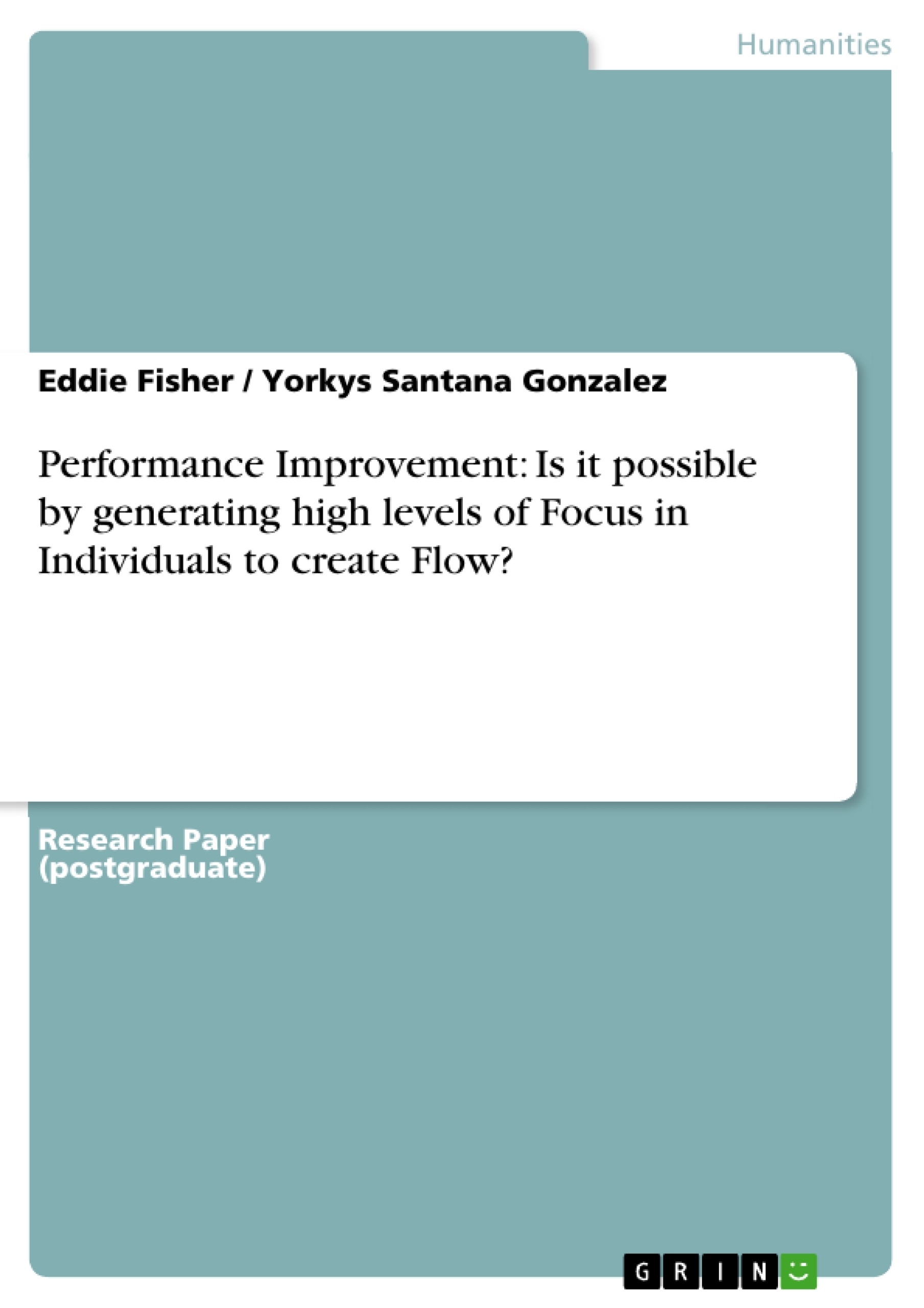The ability to improve performance levels at work through the development of flow has the potential to become a new management skill for managers. The outcome of this research suggests that managers can achieve higher performance levels in each of their team members. It is a necessary condition that they, for example, lead them by example, allow people to act within their abilities, show them how to mask distractions and create mental and emotional fitness within people’s minds. It appears that more than one component of flow is necessary to develop what is generally referred to as a state of flow. The outcome of this research suggests that the contribution flow makes to performance improvement can be measured through appropriate Key Performance Indicators (KPIs).
Inhaltsverzeichnis (Table of Contents)
- Introduction
- Introduction
- Literature Review
- Focus and Concentration/Attention
- Flow
- Main Research Questions
- Research Methodology
- Method
- Data Collection and Interpretation
- Results
- Face to Face Interviews
- Discussion
- Conclusions
Zielsetzung und Themenschwerpunkte (Objectives and Key Themes)
This research aims to investigate the effectiveness of applying focus and concentration in improving business performance. It explores how managers can enhance these skills in their team members to achieve higher productivity levels. The study seeks to identify practical strategies and applications for improving focus and concentration levels, ultimately leading to desired results.
- The impact of focus and concentration on performance improvement.
- The role of flow state in achieving high performance levels.
- Practical strategies for enhancing focus and concentration at work.
- The connection between focus and attention, and its influence on human behavior.
- The importance of identifying and leveraging individual strengths to improve focus.
Zusammenfassung der Kapitel (Chapter Summaries)
- Introduction: This chapter introduces the research topic, highlighting the challenges of maintaining focus in today's fast-paced business environment. It discusses the importance of focus and concentration for achieving individual and organizational goals, and explores the potential of flow state in performance enhancement.
- Literature Review: This chapter provides a comprehensive overview of the existing literature on focus, concentration, and attention. It examines the historical development of these concepts and presents various definitions and perspectives. The chapter also delves into the concept of flow state, its characteristics, and its relevance to performance improvement.
- Research Methodology: This chapter outlines the research methods used in the study, including data collection techniques and data analysis approaches. It provides detailed information on the methodology employed to investigate the relationship between focus, concentration, and performance improvement.
- Results: This chapter presents the findings of the research, focusing on the data gathered through face-to-face interviews. It analyzes the responses of the participants and explores the insights gained regarding focus, concentration, and their impact on performance.
- Discussion: This chapter discusses the significance of the research findings and their implications for managers and individuals seeking to enhance performance. It explores the relationship between focus, concentration, and flow state, and its relevance to achieving higher productivity levels.
Schlüsselwörter (Keywords)
The key terms and concepts explored in this research include flow state, focus, concentration, attention, performance improvement, and Key Performance Indicators (KPIs). The study examines how these concepts intersect and contribute to achieving higher productivity levels in individuals and teams.
- Arbeit zitieren
- Prof Dr Eddie Fisher (Autor:in), Yorkys Santana Gonzalez (Autor:in), 2016, Performance Improvement: Is it possible by generating high levels of Focus in Individuals to create Flow?, München, GRIN Verlag, https://www.grin.com/document/334767



